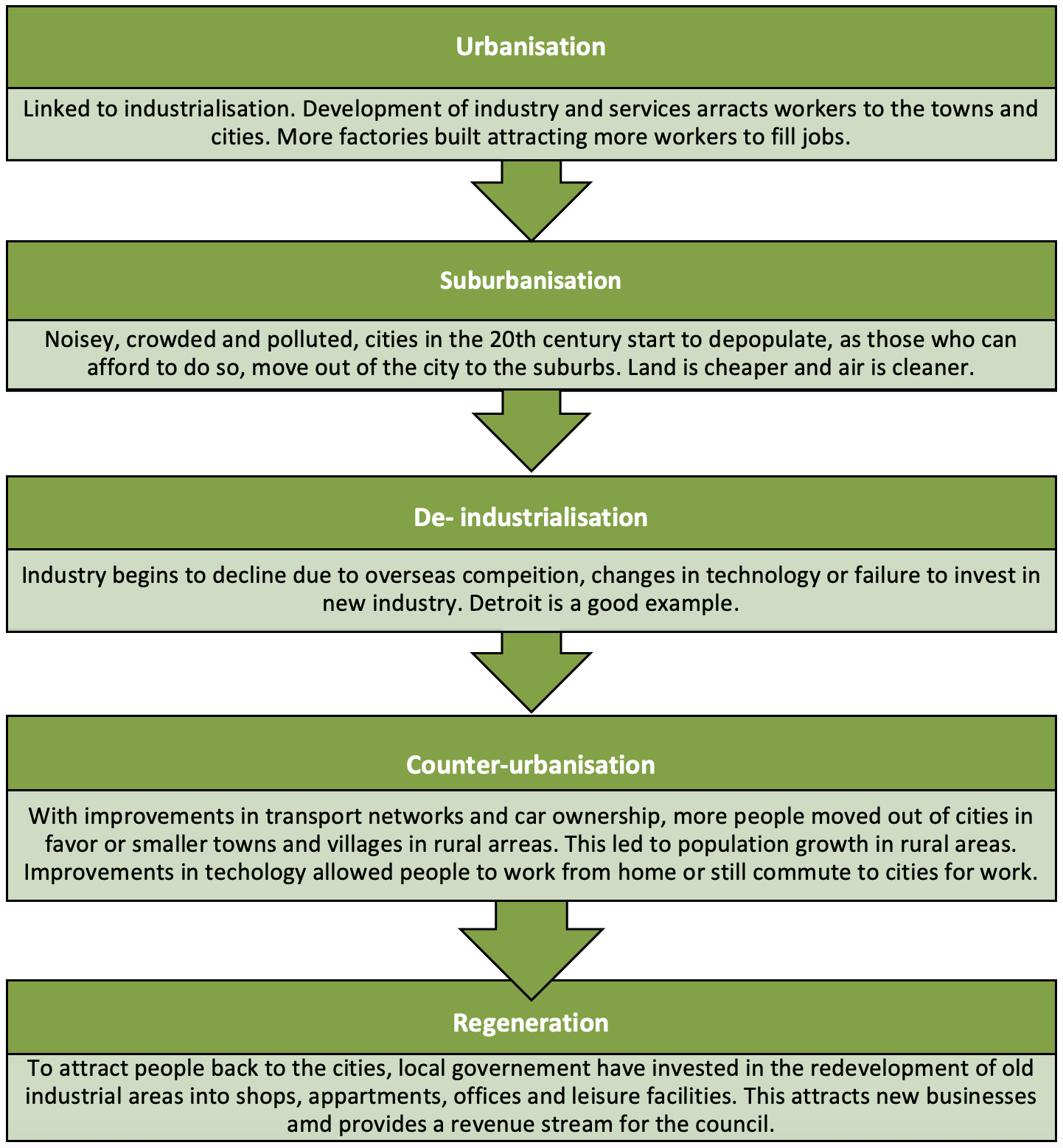Characteristics of cities in developing, emerging and developed countries
Cities in countries of varying levels of development share similar yet distinct characteristics.
Similarities: Cities in developing and developed countries both have:
- A CBD (central business district) – usually tall office blocks
- Have separate zones that are mainly residential and industrial
- Have large suburbs
- Usually spread over a wide area
- Have a range of issues with traffic congestion, pollution and provision of services.
Differences:
- Industrial areas and residential areas are more clearly defined in developed countries. In developing countries, they often overlap.
- More affluent areas are often found near industrial zones in developing and emerging countries. This is not the case in developed countries.
- Developing and emerging cities can have large squatter settlements (e.g. Mumbai)
- Counter-urbanisation has not been experienced in developing and emerging countries.
Factors affecting land use
Accessibility, availability, cost, and planning regulations are factors that have influenced the use of urban land. Let’s have a look in more detail:
- Accessibility: Shops and offices are found in the city centre because it is most accessible due to good transport links. In some cities, the city edge is also very accessible due to motorway access, leading to the development of out-of-town shopping parks and industrial developments that provide a range of jobs and services.
- Availability: Space in cities can be limited, with most city centres dominated by tall structures. When industrial sites are redeveloped, these are often replaced with housing, shops and offices.
- Cost: Limited availability of land in city centres pushes up the cost. Shops and offices are sometimes the only type of businesses that can afford to pay high rents to be located in city centres. There is often limited residential accommodation in city centres.
- Planning regulations: Local governments can decide what and where development takes place, depending on how they want the city to look. This can affect land use patterns as the local government tries to balance competing demands for land use.



